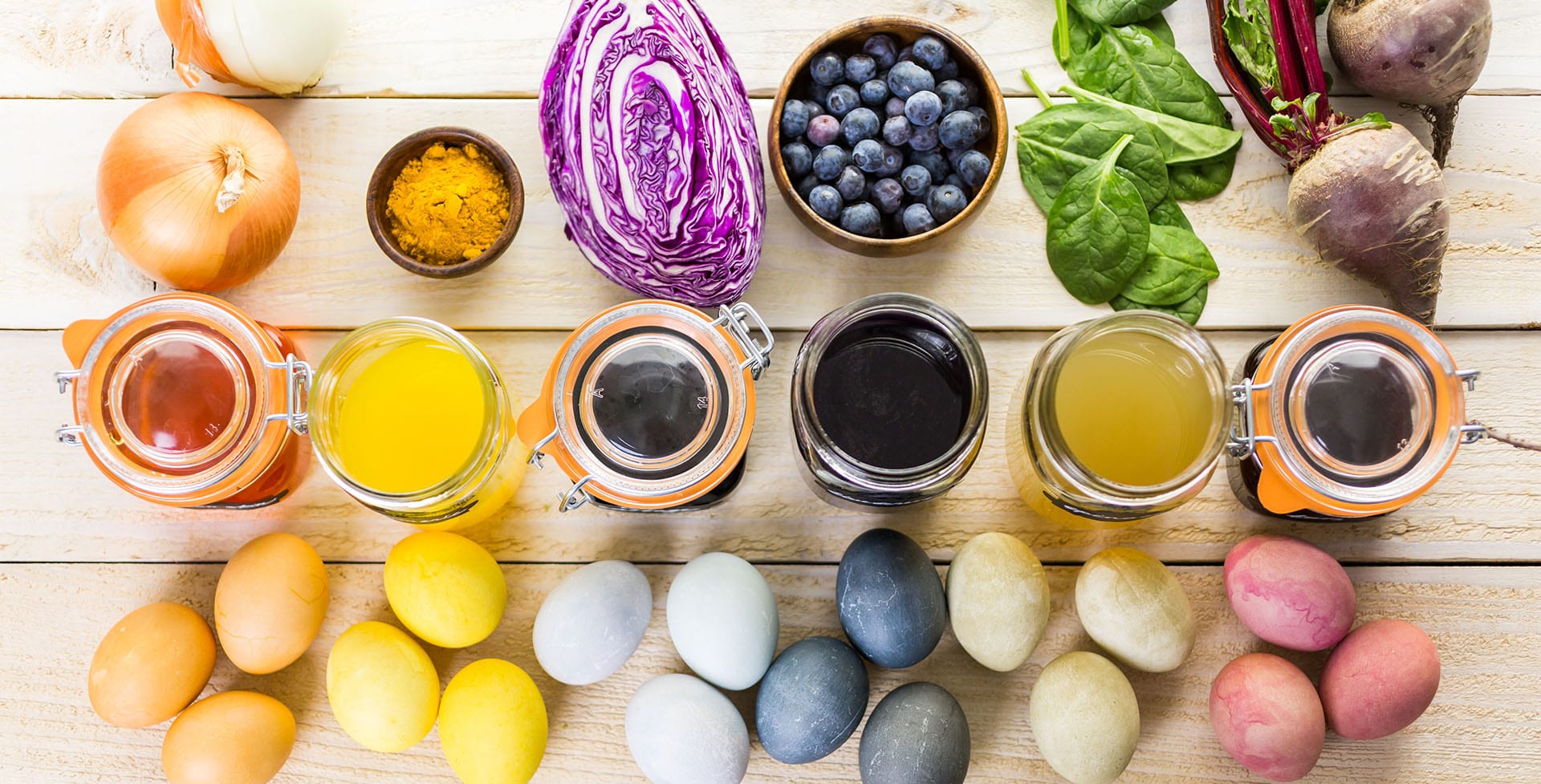
Coloring Eggs Naturally With Plant-Based Dyes
by Lori Waryanka
March 17, 2021
Some things just go with the Spring season: daffodils, longer days, budding trees and decorated eggs — but that doesn't mean you need to reach for those artificial dyes!
Welcoming nature’s annual rebirth, or Spring Solstice, with colorful eggs began many moons ago with the Persians, and the has ritual persisted through the centuries. Ancient cultures knew just where to look in nature to achieve all kinds of beautiful colors, and we can too!
Plant-based egg dyes originated more than 60,000 years ago. Findings shared with the Library of Congress reveal that archeologists digging in South Africa in 2010 unearthed fragments of extremely durable Ostrich eggs believed to have been intentionally colored red and blue. We can replicate this in our modern kitchens with eggs, beets (red), and purple cabbage (blue).
Kids never seem to mind getting their fingers stained while dying eggs, and now you don't have to mind either, as these dyes are all-natural. Hen eggs come in a variety of colors but for best results choose white eggs.
Fruits, Veggies and the Importance of Vinegar
Organic egg dye basically is made with plant material steeped in water. Vegetables, fruits, herbs and teas can yield bright hues when boiled. But the resulting tinctures will not deeply color egg shells without the help from vinegar. It’s acidic property helps to bond the natural plant-based dye to the calcium egg shell.
Common fruits used include yellow apples (peels only), cranberries and blueberries. Hibiscus (violet), black tea (brown) and green tea (yellow) are also good choices for dyes. And herbs such as paprika and turmeric yield bright hues.
Kids and the Chemical Process
It’s fun to let the kids choose which colors they would like to dye their eggs, but there may be a little confusion when the youngsters compare the natural colors of the food with the varying shades of the dye water and with the color of the tinted eggs.
For example, purple cabbage produces a purplish water when boiled but the eggs stain blue. And, yellow apple peels create a lavender/rust shade — It’s kind of like magic in the mind of a child!
This activity is a great science experiment to enjoy with young children, but it’s also tons of fun — always the best way to learn.
Remember: The vinegar is needed for the natural plant-based dye to stick to the egg shell but it does not affect the color.
Supplies and Tools
Once you decide on your colors and gather the natural products, look around your kitchen and in the recycling bin for other required materials. You’ll need a pot for each dye color along with a slotted spoon and glass jar. It’s a great opportunity to repurpose containers and save them from the landfill. Also gather a metal baker’s rack or empty egg cartons for drying eggs once they’ve been removed from the dye water.
It’s best to use newspaper or cardboard pieces as a table covering to catch any dye water that may drip or splash on the work surface.
Coloring Methods
We like to use a “cold bath” method when dyeing eggs, especially when young children areinvolved. Eggs are hard boiled in a stainless steel pot separate from the dye material, and set aside to cool. The dye water is made and cooled prior to submersing the eggs.
There is a “hot bath” process which calls for cooking the eggs along with the coloring agent in the same pot. This method would work best if you need to dye large quantities of eggs, want to save on time and have no little hands ready to help with the task.
We recently created egg dyes by using 3 large fresh beets to make a reddish color, 1 head of purple cabbage to make blue, and 3 tablespoons of turmeric to create yellow. All were made with the water/vinegar ratio given in the recipe below.
We refrigerated our eggs and let them linger in the dye bath overnight to achieve optimum color intensity, but noticed that the egg shells took on color within an hour of being submersed.
Follow this guide from the East End Coop to learn what you’ll need to create all your favorite colors.
No time for natural, homemade dyes?
You can still treat your family to a safe, all-nature day of dying eggs. Hop online and shop for brands of natural egg dyes o including Natural Earth Paint and eco-kids. They are sold in minimal packaging, and do not come with plastic cups and other extraneous materials that aren’t eco-friendly.
How to Color Eggs Naturally Using a Cold Bath Dye
- Hard boil desired number of eggs for dyeing and cool.
- Combine 1 quart of water and 3 tablespoons of vinegar in a pot, and bring to boil.
- Add natural plant matter of your choice to the pot and simmer for at least 30 minutes.
- Strain the plant material from the water.
- Place colored water into a glass container or jar and let cool.
- Add eggs to colored water and let soak until desired shade is achieved.
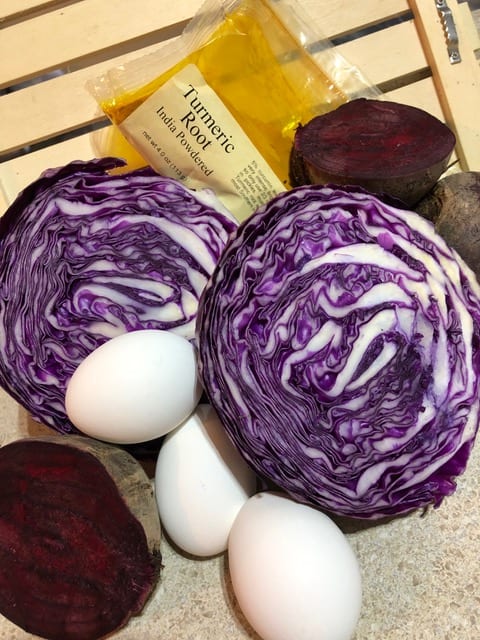
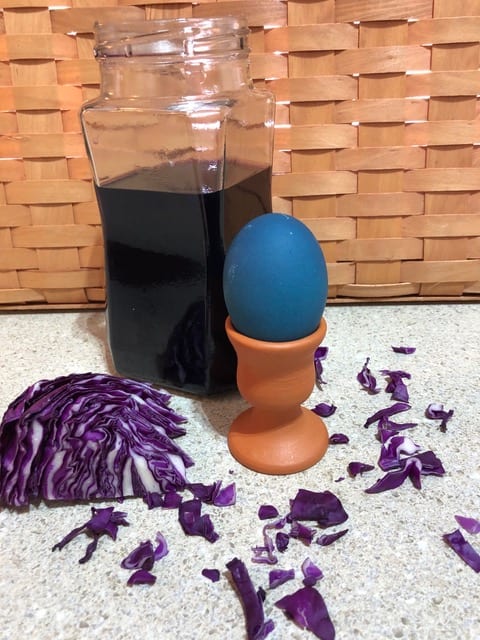
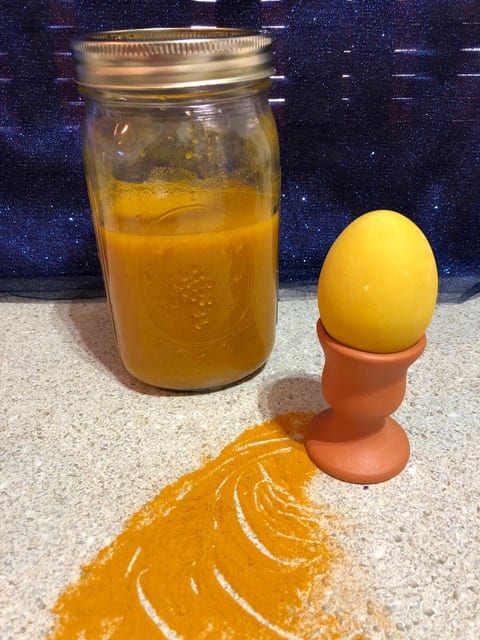
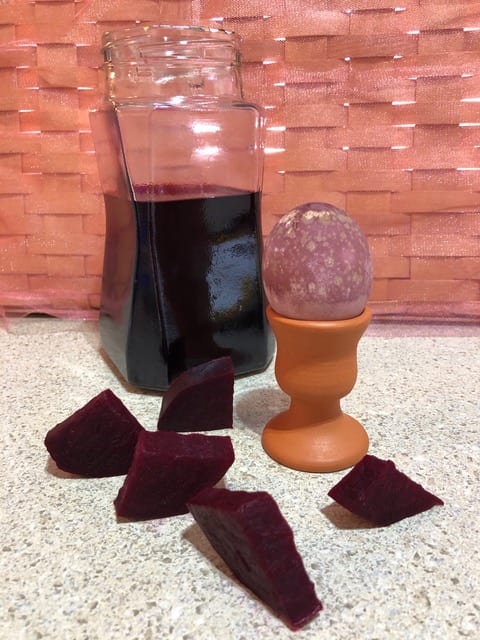

Leave A Comment